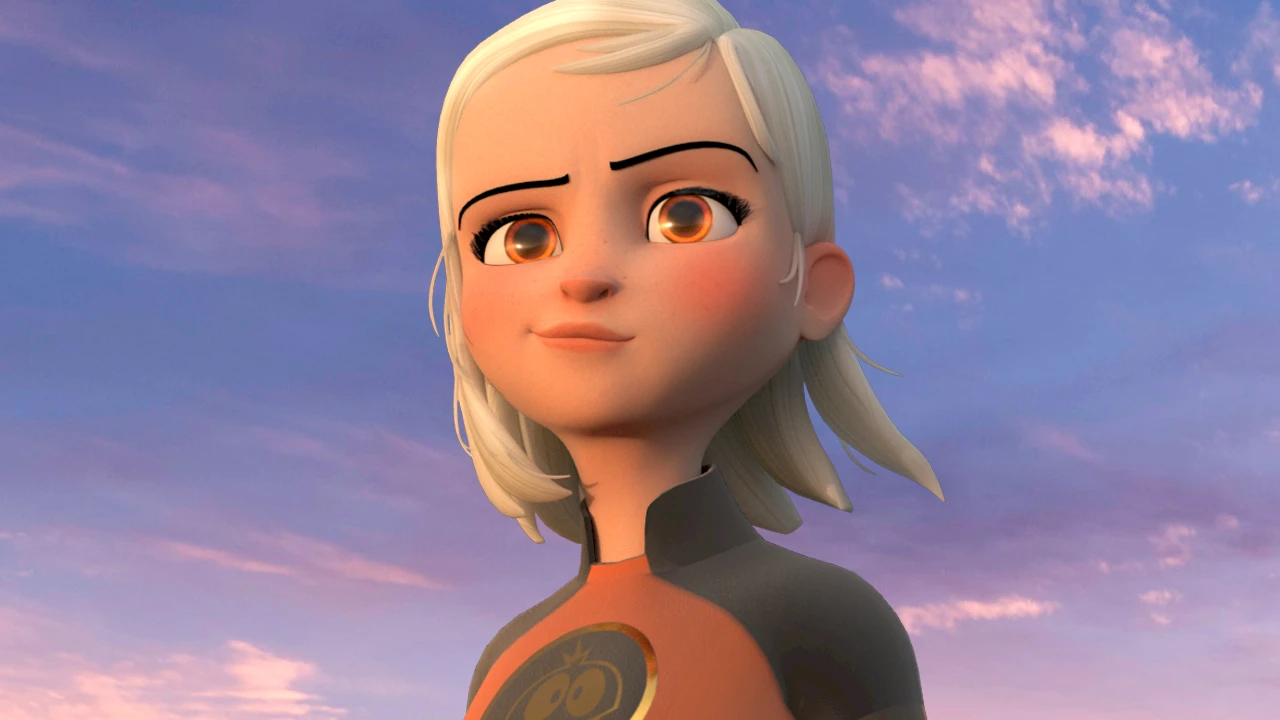CG Animator Austin Eddy’s tips for matching stop-frame animation
Although The Boxtrolls is a feature film created with stop-frame animation, not all animators at Laika work with tiny puppets and 3D printed face replacements. At Laika, a crew of CG animators performed background Boxtrolls and human characters that appear throughout the film. Animator Austin Eddy is one of those animators. Before Laika, Eddy was most recently at Weta Digital where he animated characters for Tintin and for the live action films Planet of the Apes, Hobbit, Avatar, and other features.
A background in live-action filmmaking is important for CG animators working on stop-frame films.
“We treated The Boxtrolls like a live-action film,” Eddy says. “In live-action, they shoot actors in front of a greenscreen and your CG characters and creatures interact with them. On Boxtrolls, instead of actors we had stop-motion animated characters shot against greenscreen. When we start on a shot, we get the plates with the stop-motion characters in the scene and a match-moved camera. We can see the stop-motion characters, so we can make sure our characters are in the same world and move the same. Stop-frame animation is such a difficult and time-consuming art form, it would be nearly impossible for those animators to do as many characters as are in these scenes. The main characters are stop motion, but most of the background characters and a lot of backgrounds are CG. We pretty much touched every scene in the film.”
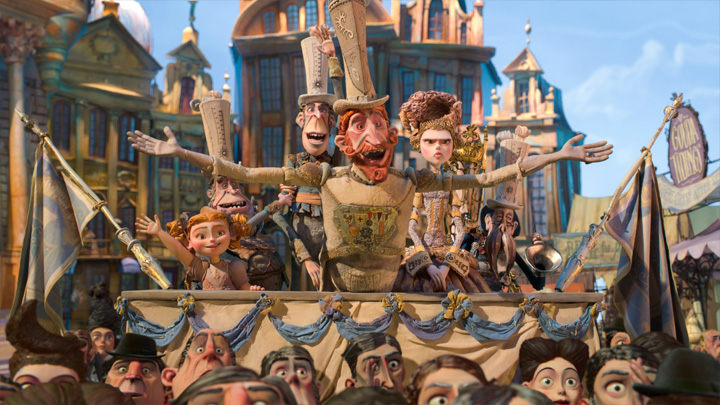
Motion-capture can give CG animators a good starting point.
“Sometimes it’s easiest to animate by hand, but in shots where we had 30 characters or more, it would have been a long task to do keyframing,” Eddy says. “So, we had a lot of motion capture shots for the human characters, for the crowd sequences at the end with a couple hundred characters on screen, and some of the dance sequences as well. They hired professional dancers and a choreographer. We’d bring the data into Maya and take what we needed, the timing, the pared-down movement, the basis of what was happening, and then keyframe the hands and the feet. We had to know what we wanted to take from the motion capture to make it feel like stop motion.”
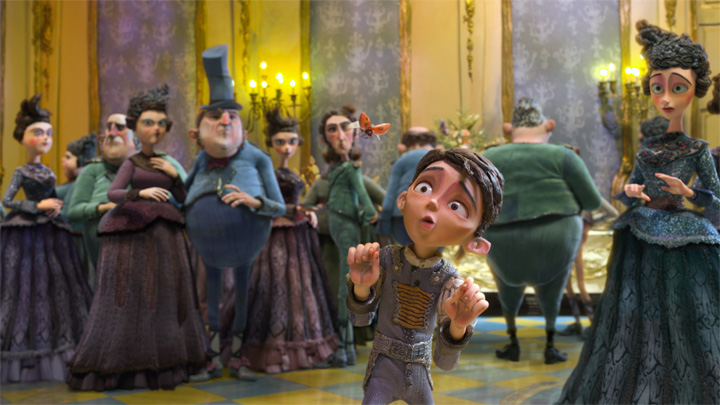
It’s hard to make dancers look like puppets.
“The people they motion-captured for the ballroom were trained dancers, so they were very posed in the way they held their bodies and moved,” Eddy says. “But the stop-motion characters were aristocratic people dancing at a party, so we had to adjust the dancers’ poses to make them live in that world. Also, the aristocrats’ proportions were different – the puppets are caricatured a lot. And the costumes were different. The dancers wore black spandex suits with dots. In the film, the women wear hoop dresses. So, the way the female dancers interacted with the male dancers didn’t carry over. The CG characters are right next to the stop-motion characters in the film, so we had to make sure our animated characters didn’t stand out, which was difficult. Stop motion is so different from motion capture, sometimes I thought I could just keyframe the character and it would live in the world better. We had to walk a fine line.”
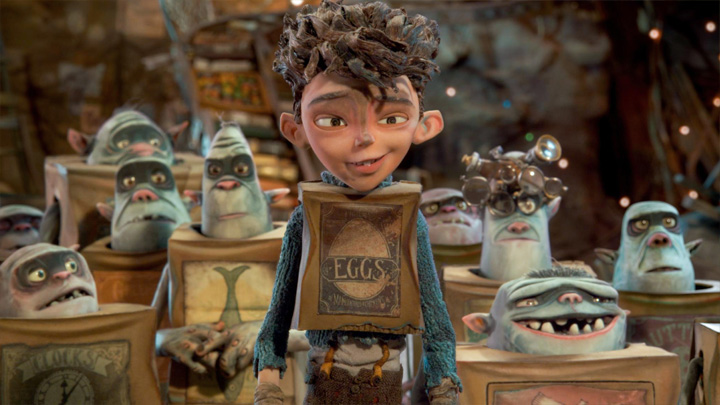
But, animating Boxtrolls is fun.
“The Boxtrolls were super fun to work on,” Eddy says. “One of my first shots was having the CG Boxtrolls standing around Eggs [the main character] pop into their boxes. The lids come over and flap down. Doing that snappy animation is great. Sometimes when I was working on creatures or characters that are big and heavy for live-action films, it got laborious. But, the Boxtrolls are fun, energetic characters that have a cute little walk. We had a couple big sequences with CG Boxtrolls and for me that was the best part of the show. Their design is fun.”
Animators can build CG characters, too.
“The modelers and riggers set up a system we could use to create a large number of individual Boxtrolls,” Eddy says. “We could have different arms, heads, legs, boxes, and labels for the boxes. I think we had maybe 12 or more variations that we ended up using the most, but we could have created hundreds. The proportions changed, but they all had similar, standardized rigs. Before we loaded a scene, we decided which Boxtrolls to use, but we could switch them on the fly. The way they’re rigged, we mostly used the box as their body, but in a couple shots, you see their bodies.”
Matching CG faces to puppets animated with 3D printed parts is difficult.
“Facial animation in CG is easy – you can get results very fast and it can be very nuanced and smooth,” Eddy says. “But stop motion facial animation is built from kits with thousands of shapes. The faces are split in two with brow parts and mouth parts. The stop motion animators swap out every face on every frame. That gives the characters a beautiful hand touched look. But, CG animation doesn’t have that hand-touched look out of the box, so getting the CG characters to live in the same world is tricky. Our facial rigs are not blend-shape driven. We have some corrective shapes, but we mostly use deformers and controls. We make our own shapes as we go.”
One’s or two’s? That’s not the important thing.
“I like to work on one’s,” Eddy says. “It’s the way I’ve done animation throughout my career. But, if you look at the motion onscreen and it looks right, I’m not concerned about whether it’s on one’s or two’s. It’s more important to get the feeling right.”
Detail is in the curves.
“The puppets have metal skeletons built into them that have the same kind of joints we have in a CG rig, so they’re similar,” Eddy says. “They’re both 3D, both joint driven, and you pose them. The difference is that in CG we have IK and stuff like that, so they aren’t exactly the same. What gives stop motion life is that extra bit of not being 100% smooth and perfect. I spend more than half my time in the graph editor area because it’s super important to understand the curves. I tweak the curves to the utmost degree. Sometimes, I add a little bit of noise so the arcs are just a little bit off. That gives it an extra something that makes it realistic. It’s super important.”
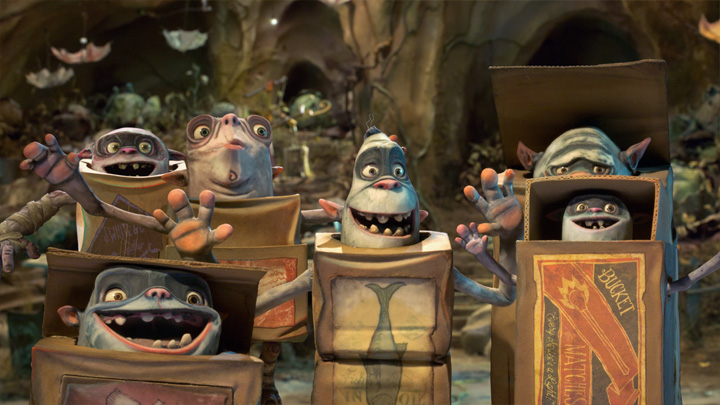
Even background Boxtrolls can have individual personalities.
“We tried to make sure all the CG Boxtrolls had a little life,” Eddy says. “They weren’t just random guys; each has a story. We ended up giving all of them nicknames. There was one the directors nicknamed Photobomb because he always ended up in the shots. And, each of the main characters like Fish and Shoe has a little paper label on front his box, so we put labels on our CG Boxtrolls, as well. The labels were art directed and then transferred into CG, so we could switch them around. Some are shout outs to people on the show – there’s one for Brad Schiff, the animation director: Bradley’s Bouncing Balls.”
There’s real and then there’s real.
I come from a visual effects background, so I’m used to making my animation look very real, very heavy, to live in the real world and interact with the live action world. Stop motion is a caricatured, stylized, exaggerated real world, so it was a transition for me. Of course the principals of animation are all the same. But, when you get into the finer details, understanding how a Boxtroll interacts with the real world is a lot different from understanding how a chimpanzee moves. It was great to have that different perspective. This was a fun experience for me.”




